I live in Kirby le Soken which is by Hamford Water where there is mud and salt marsh.
I have written about salt marsh and mud, so for a change this post will be about sandy beaches.
There are about 15 miles of sandy beaches along the Tendring coast, from Walton-On-The-Naze in the north east to Lee-Over-Sands at the south west.
Yesterday afternoon (10 October 2011) low tide was at about 5:20pm. I went to Frinton beach about 3pm and took these photographs
Later, about 4:30pm I went to southern end of Clacton beach, near Jaywick and took these pictures
Looking north towards the pier
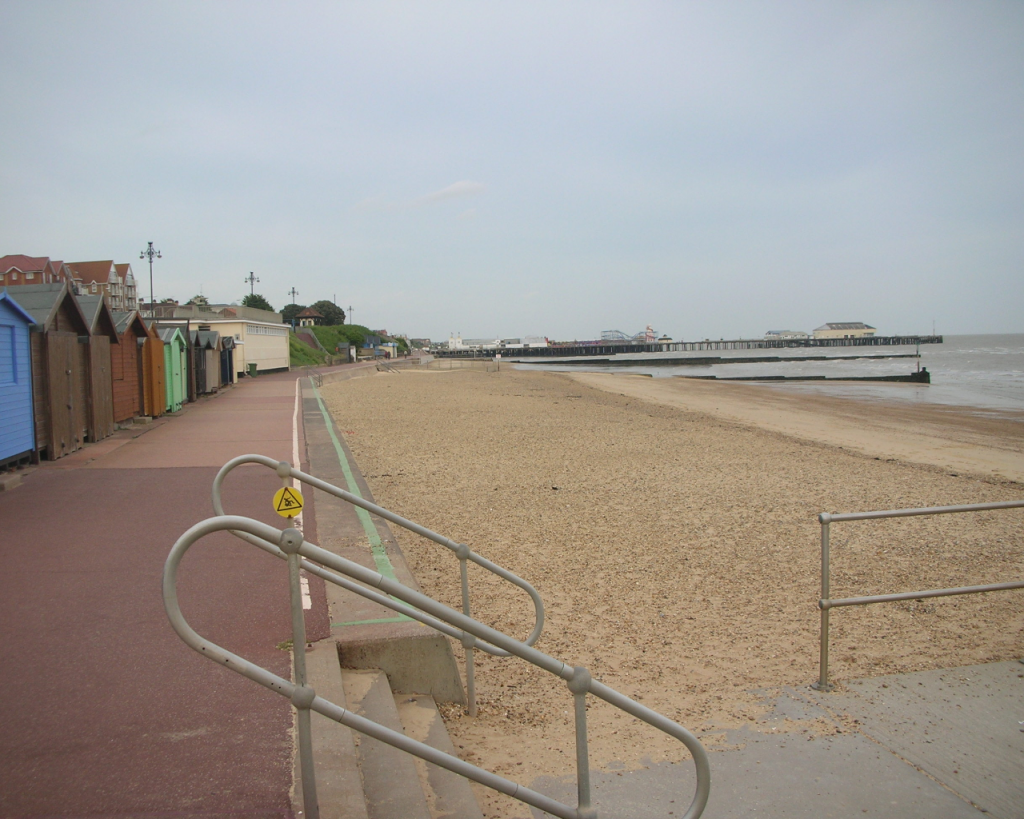
Looking south towards the rock breakwaters at Jaywick
So large sandy beaches. Long wooden breakwaters that are mostly buried in sand at Frinton and Clacton. Large rock breakwaters at Jaywick.
At Clacton and Jaywick there is a large amount of sand in front of the sea wall that reaches almost to the top of the sea wall.
In between visiting Frinton and Clacton I went to Holland-On-Sea which is in between Frinton and Clacton and took these photographs at about 3:45pm
Probably only 10 or 20 yards of beach, compared to about 100 yards or so at Frinton and Clacton.
The breakwaters are clearly in a very bad state of repair and from the height of the vertical posts there used to be many more boards.
If the boards went up to height of the top horizontal bar in the picture below perhaps the beach between the breakwaters would be full of sand and the breakwaters buried, as they are in Frinton and Clacton.
It’s clear that the boards used to extend to just below the top of the sea wall.
And the sand and shingle will still fill up to the level of the top of the boards. Having sand in front of the sea wall is essential as it protects the wall.
But without effective breakwaters the sand is washed away, leaving the sea wall vulnerable to be destroyed by the sea. Compare the height of the sand in relative to the sea wall in this photograph with the photographs of Clacton beach.
But just a few hundred yards north of Holland-On-Sea another bay with a very different look.
It seems clear to me that the reason there is so little beach at Holland-On-Sea is that the level of the sand is much lower than at Frinton or Clacton. This means that even at low tide the sea can still be near to the sea wall.
As there are still some posts, surely the answer is obvious, just fix some boards to the posts. Once the breakwaters are repaired the sea should fill the beach up with sand again.
Well the answer may be obvious but it is not simple. I understand the Environment Agency have the sole responsibility for works on the beach and EA has declared that breakwaters do not work. Not only will they not repair the breakwaters they will not allow anyone else to do so either.
If the sea wall fails, then it is possible the cliffs behind the wall will fall, risking damage to the road and houses above the cliffs.
All for the want of a few bits of planking.

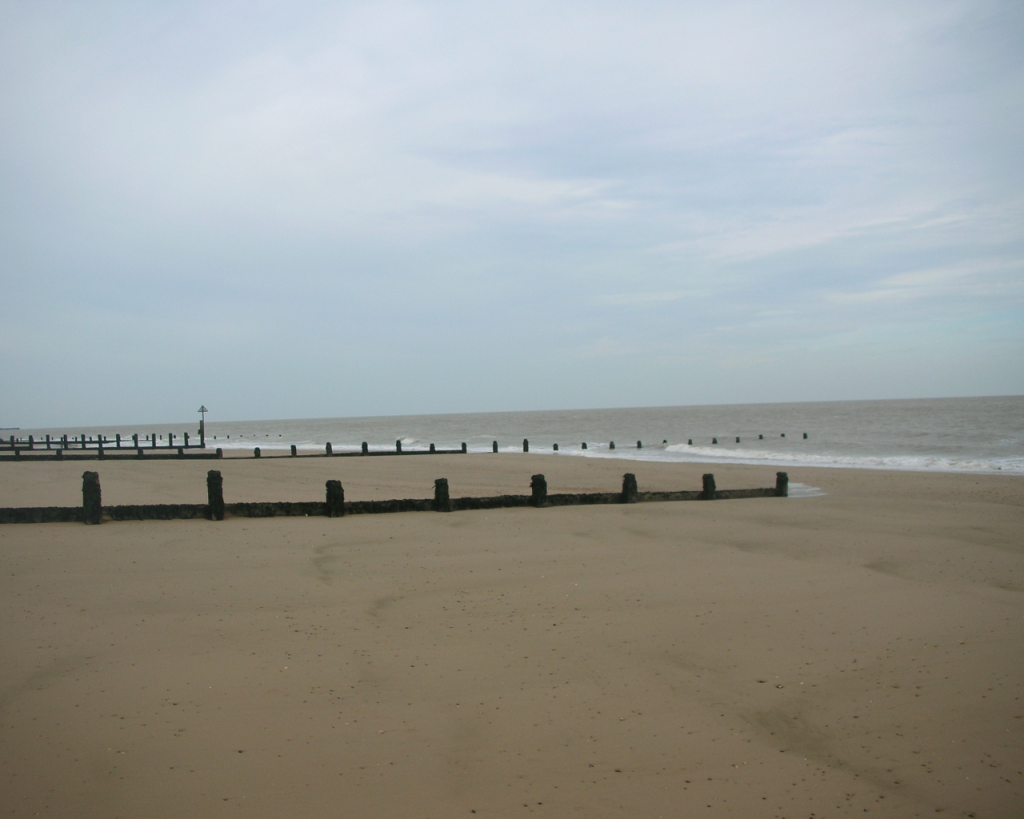
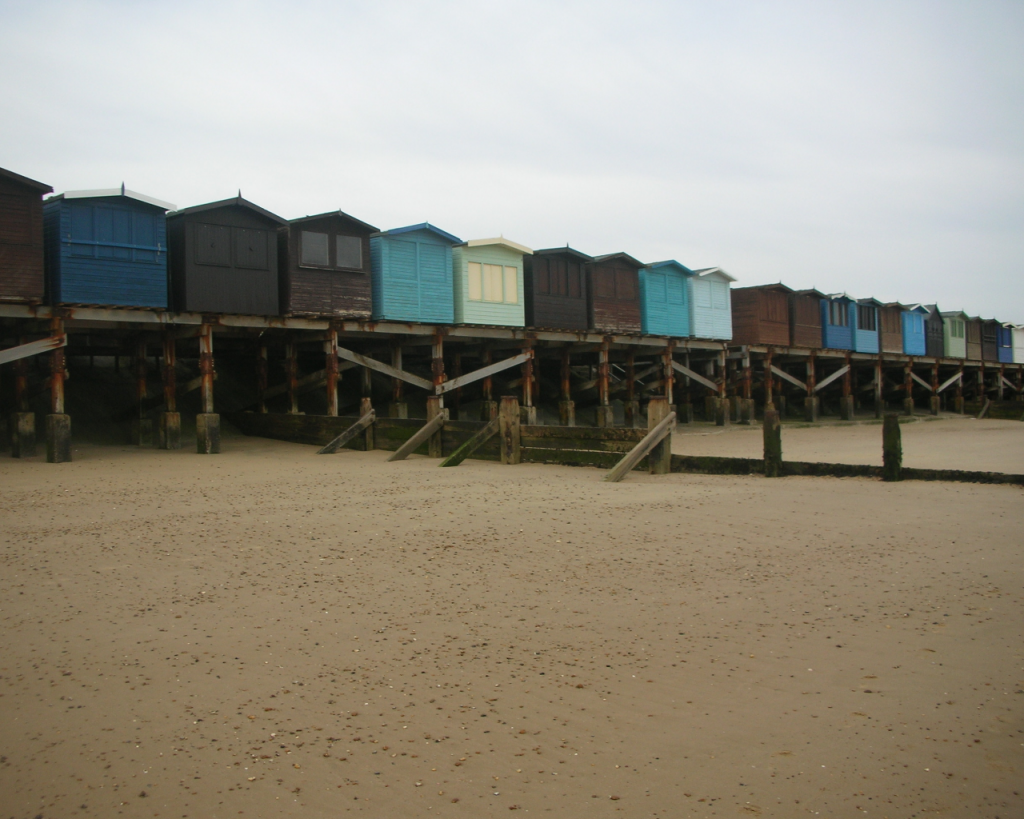

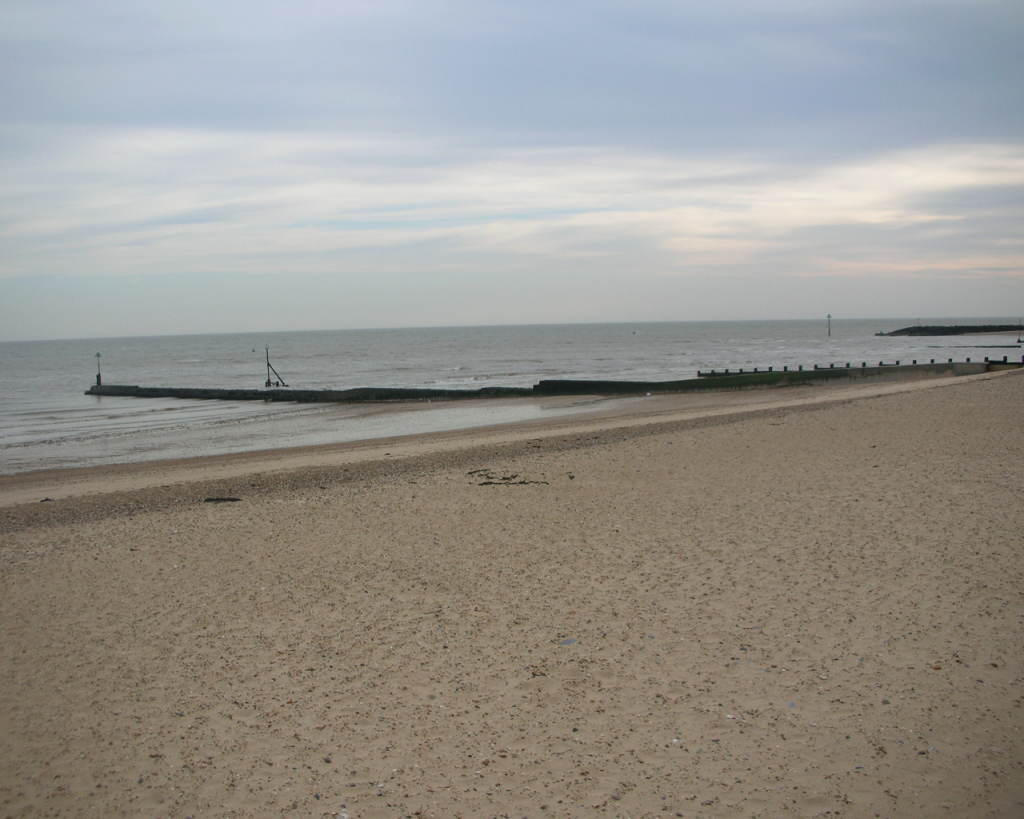
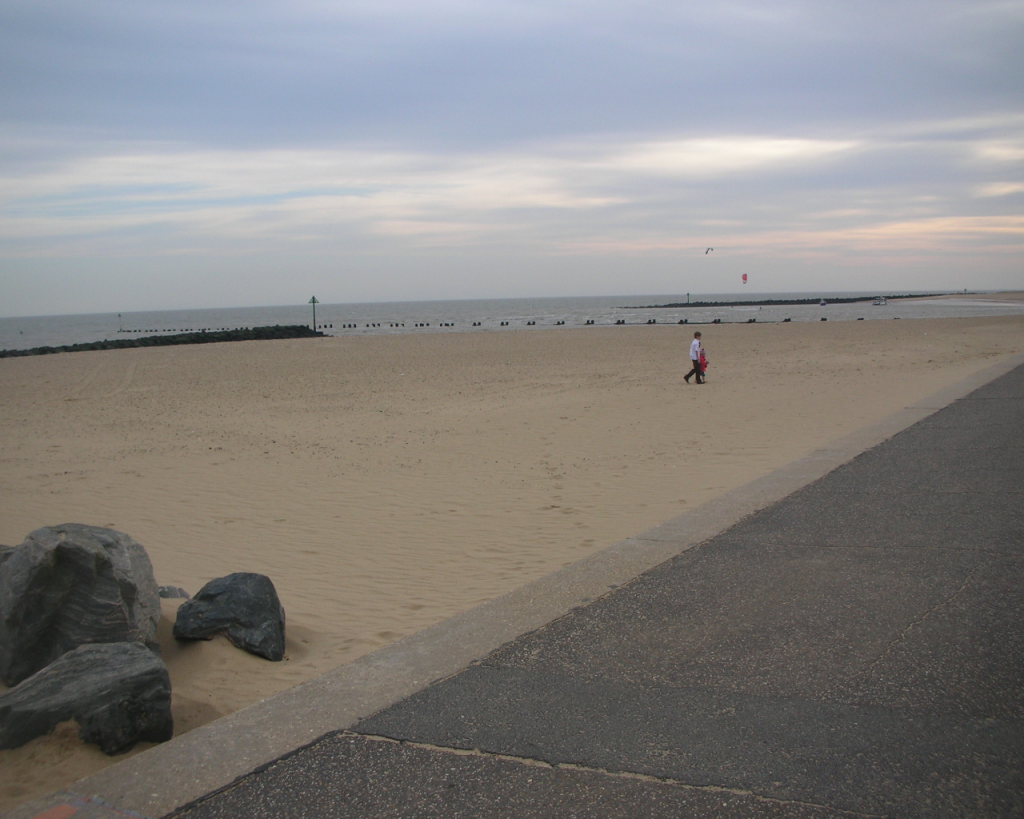
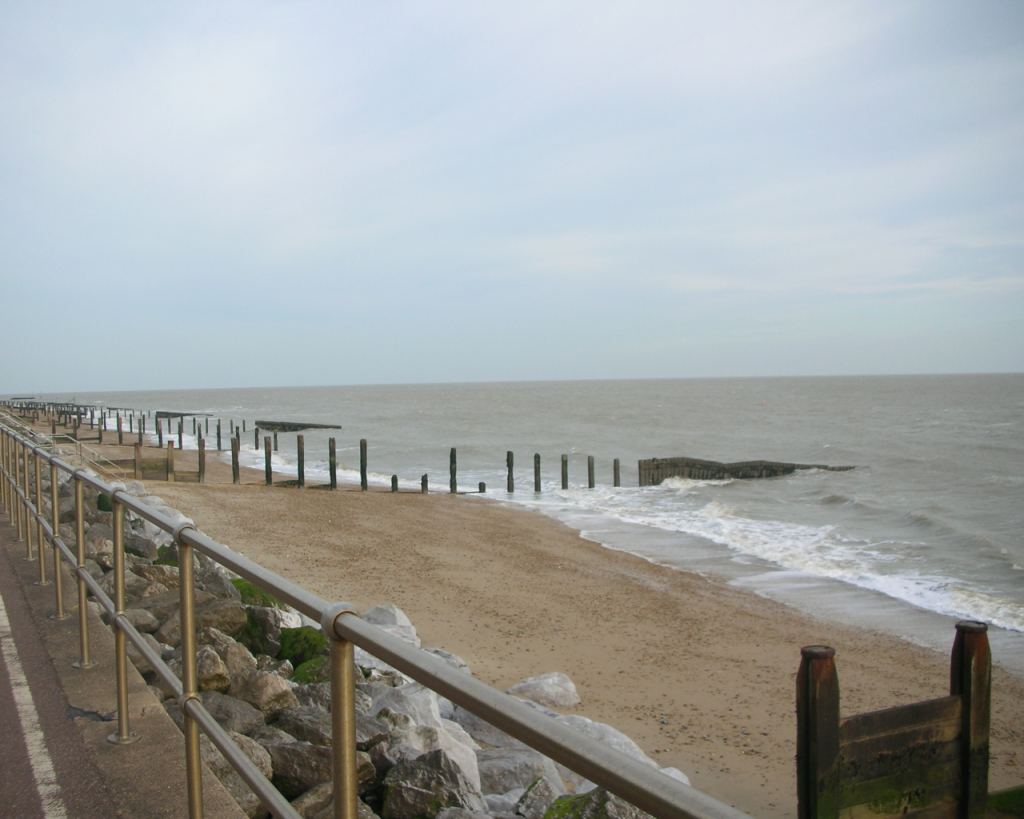
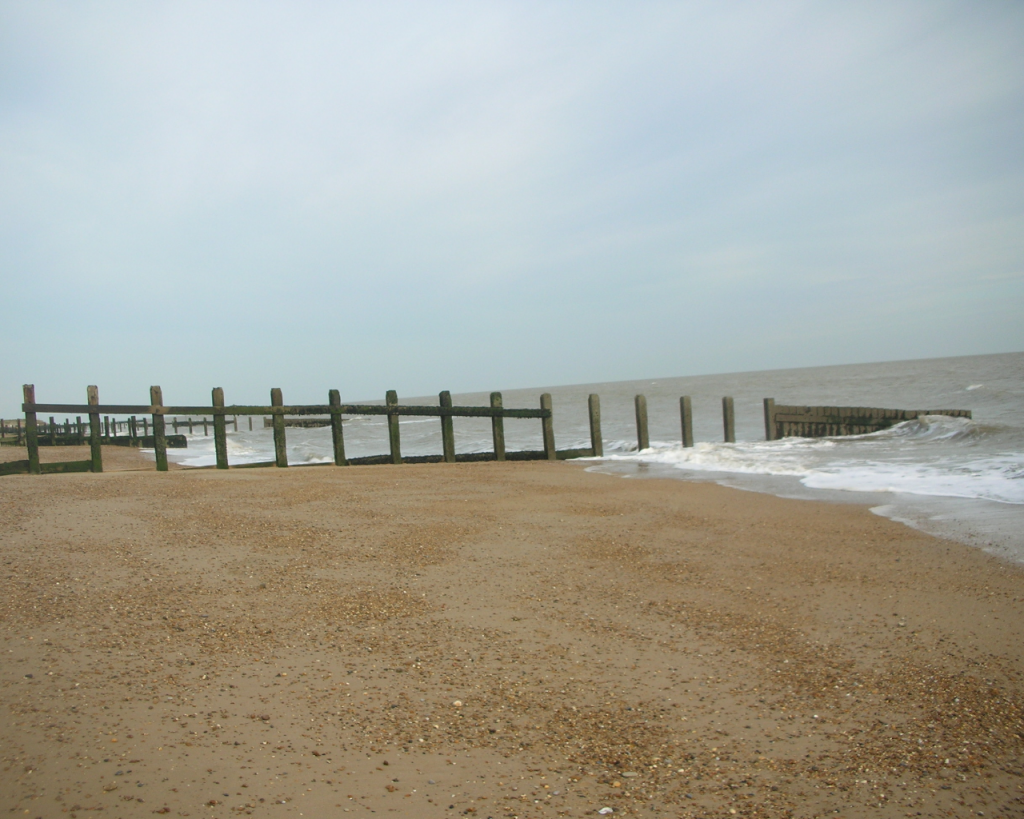

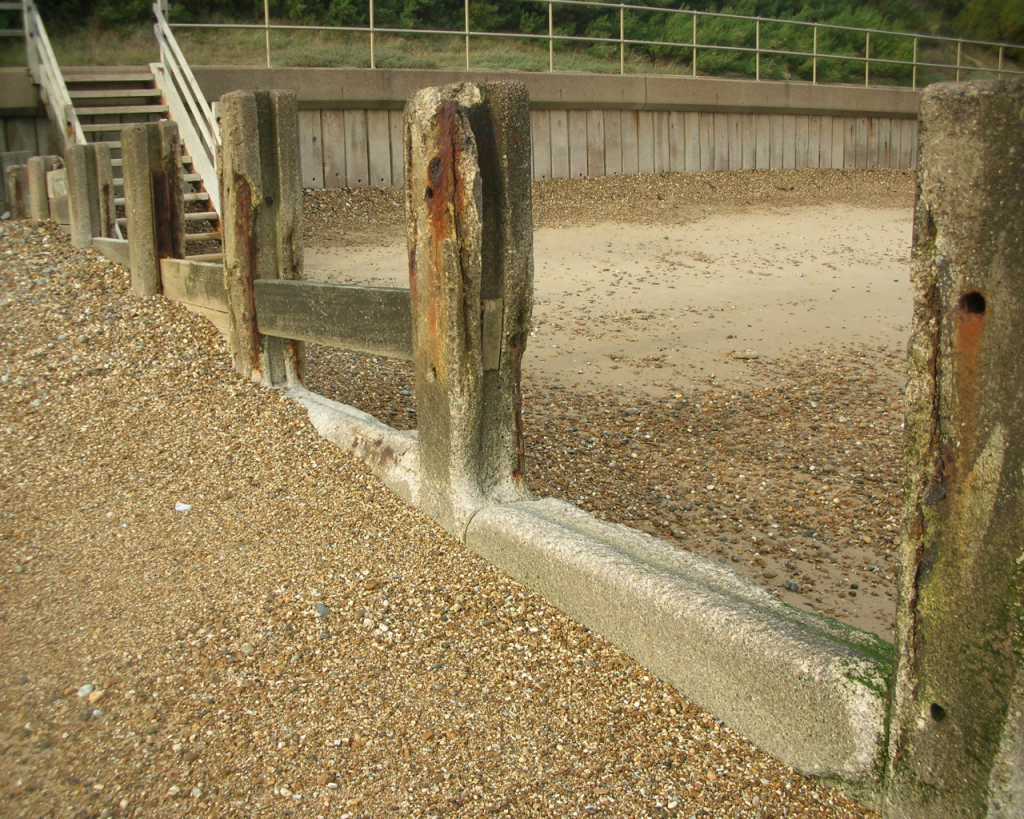
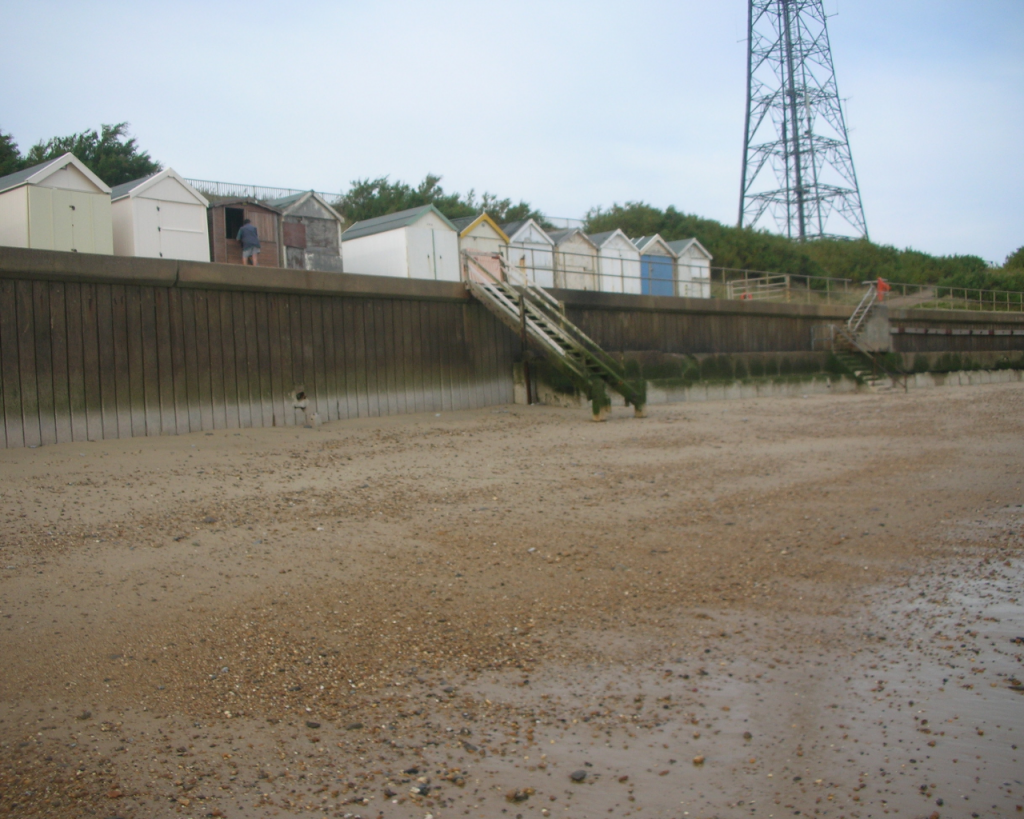



One Response to Do You Need Breakwaters For Sandy Beaches?